 As you may have already heard, a new section has been approved for the 2027 I-Codes that will (finally) address interlocks, also known as control vestibules. To date, the model codes have not addressed the requirements for this electrified hardware application, so having written guidelines will be a great help in increasing consistency and streamlining product selection. A proposal is in progress for the 2027 edition of NFPA 101 – Life Safety Code.
As you may have already heard, a new section has been approved for the 2027 I-Codes that will (finally) address interlocks, also known as control vestibules. To date, the model codes have not addressed the requirements for this electrified hardware application, so having written guidelines will be a great help in increasing consistency and streamlining product selection. A proposal is in progress for the 2027 edition of NFPA 101 – Life Safety Code.
The increased focus on interlocks prompted today’s Quick Question:
What is the difference between a safety interlock and a security interlock?
The answer to this question came from DHI via Mark Kuhn, an architectural consultant with Allegion and a volunteer instructor with DHI. DHI uses the following operational descriptions for the two types of interlocks:
Safety Interlock: Both doors are normally unlocked. Opening one door causes the opposite door(s) to lock and they remain locked until the first door is closed. All doors remain unlocked during fire alarm activation.
Security Interlock: Both doors are normally closed and locked. Unlocking with a valid electronic credential on one door shunts the access control reader(s) on the opposite door(s) until the first door closes and relocks. All doors remain unlocked upon fire alarm activation.
Safety interlocks are commonly used in clean rooms and lab areas, where security interlocks are often used where security is more critical, like data centers or money-counting rooms in casinos. The changes to the model codes do not differentiate between the two types of interlocks; either type could be used as long as the code requirements are met.
Control vestibules should not be confused with sallyports, also known as mantraps; this is a term that is typically used in detention and correctional settings. A sallyport is defined by the International Building Code (IBC) as: A security vestibule with two or more doors or gates where the intended purpose is to prevent continuous and unobstructed passage by allowing the release of only one door or gate at a time.
The IBC allows sallyports to be used in Group I-3 occupancies (ex. correctional centers, jails, prisons), if there are provisions for egress during an emergency condition. Sallyports in a detention setting are different from the control vestibules used in other occupancies, because a sallyport typically prevents user passage under normal operation and a control vestibule allows user passage through one door at a time.
Any questions?
You need to login or register to bookmark/favorite this content.



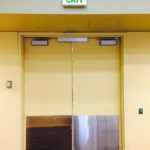

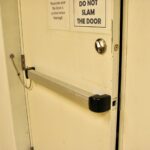
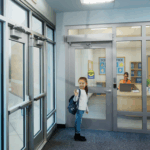
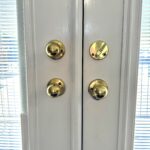
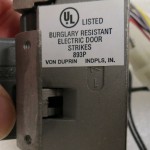
2027 IBC ,,, How is panic hardware addressed in H-4 occupancy, when there are interlocks?
Or other similar H’s that use interlocks ?
Hi Charles –
For anything other than a high hazard occupancy, it would be very unusual to have doors with panic hardware that are part of an interlock. But since the I-Codes require panic hardware for doors serving a high hazard occupancy of any occupant load, it’s a possibility. I don’t see anything in the new section that would prevent the use of an interlock…the doors would likely have electromagnetic locks to provide the interlock function.
– Lori
Make that a H-5 fab
For the 2027 I-Codes, proposal E61-24 addresses the following requirements:
Looking at E61-24 Does not seem like panic hardware was addressed. Not sure what the final wording is?
Been awhile, but I think I was use to sliding doors, and not swinging.
Anyway H-4’s are coming back, so will se how the AHJ’s handle the interlocks.
Great article!!!